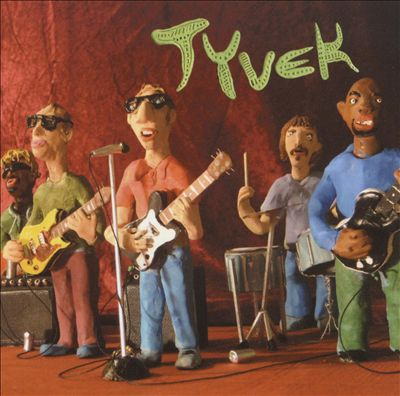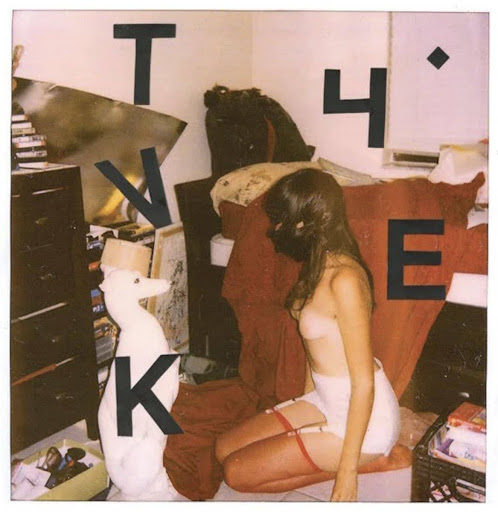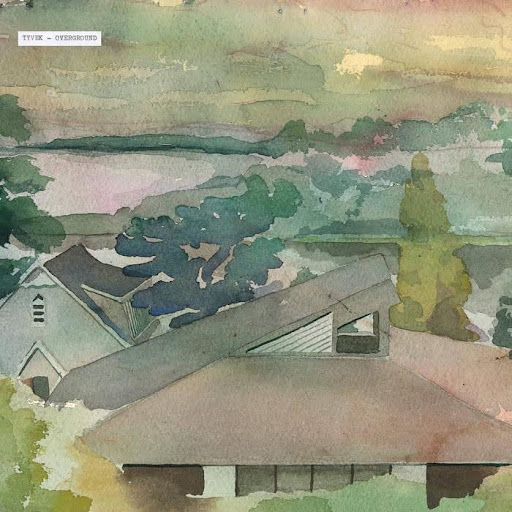Tyvek.
The name rings a bell, right? You’ve likely seen the name plastered over houses in development and various other construction projects that require the iconic flash-spun, high-density polyethylene fiber material for a multitude of reasons. This definition also aptly applies to the Tyvek of discussion in today’s piece: Detroit’s underground art-garage-punk legends, Tyvek.
In 2004, Tyvek formed in a serendipitous Detroit attic. The band came together as the brainchild of Kevin Boyer, the group’s frontman, guitarist, primary songwriter and lone constant member. Throughout the years, the band has comprised of over two dozen different members, with individuals regularly coming in and out of the band’s lineup.
Stylistically, the band pulls more influence from early art punk, minimalist and DIY bands such as Pere Ubu, Urinals and Swell Maps rather than staying loyal to the typical Motor City Music sound. This sets the group apart as somewhat of an anomaly within Detroit’s extensive and expansive garage rock canon.

Unlike this de facto rock sound associated with countless Detroit-based rock bands, Tyvek fully embraces an unapologetically loud, literate and verbose approach to their songwriting. Boyer’s trademark noodly and twang-infused guitar riffs, coupled with his staccato, emphatic vocals incessantly drive each song forward, ingraining them firmly in your brain and leaving one craving for more.
Since their initial inception, the group has released a plethora of singles, EPs and albums garnering significant critical acclaim. These releases include both self-released pieces and works distributed through various indie labels, including What’s Your Rupture?, Siltbreeze, S-S Records and Sub Pop.
While the group’s discography continuously grows and their sound inevitably evolves, Tyvek’s core principles and insatiable appetite for experimentation remain unwavering. This commitment and clear identity glaringly permeate the band’s numbered releases. With this introduction out the way, we’ll dive into three of the band’s essential albums, including their latest release “Overground,” which debuted last November.
“Tyvek” – 2009

The group’s self-titled debut instantly lays the foundation for what Tyvek is and will be, albeit with a less-than-desirable budget. For 35 minutes, the band takes you on a rowdy yet composed journey across their musical spectrum of ideas through the other end of a low-reception phone call.
Despite how lo-fi the production is (some songs even sound like the drums themselves were DIY cardboard crafts), the album flows surprisingly well. “Tyvek” delivers both moments of sheer chaos, as is the case with the two-minute whiplash-inducing “Frustration Rock,” alongside slower, melodic tracks showcasing more slacker-esque instrumentals that allow Boyer to spotlight his poetic prowess, as poignantly exemplified on the track “Duck Blinds.”
In some cases, Tyvek interprets a song through both lenses, as evidenced by the back-to-back tracks, “Building Burning” and “Building Burning (Re-Edit),” with the former gradually building up to the explosion of energy of the latter. Every track feels meticulously placed, making the album an experience that inevitably grows on you over time despite the unorthodox production. Overall, “Tyvek” is an extremely solid effort that ultimately sets the stage for what comes next.
“Nothing Fits” – 2010

Next is “Nothing Fits”, an album that sees the band bring in hi-fi production and eradicate any lingering frills found within their previous material. On “Nothing Fits,” Tyvek makes it known from the beginning of the opening track, “4312,” that they mean business.
The album is 25 uninterrupted minutes of raw, gut-punching bursts of energy distributed across 12 tracks. In true punk fashion, three-fourths of the tracks here don’t even reach the two-minute mark.
Those that do, as is the case on the almost five-minute epic “Outer Limits,” more than justify their relatively longer runtimes. On this particular track, the band relentlessly propels themselves through the first three minutes of the track, driven by the hypnotic combination of incessant drums, distorted guitars and Boyer’s shouted vocals, before devolving into a psychedelic instrumental breakdown of synths and sirens.
Even on “Underwater 2,” a surprisingly intimate moment on the record, the band refuses to sacrifice the album’s high tempos and spunky attitude, crafting a stunningly beautiful love song that seamlessly slots itself in with the rest of the album.
“Nothing Fits” embodies hardcore punk as if it were dipped in several vibrant paint buckets. The album concludes before giving you a clear chance to digest it, effortlessly making it Tyvek’s most re-listenable release.
“Overground” – 2023

Over seven years removed from their previous release, “Origin of What,” Tyvek reminds everyone that they’re just as sharp, articulate and electric as ever, giving the impression they’d never left.
What “Overground” does so seamlessly is take the finest elements of Tyvek’s previous outputs and amplify them exponentially. An example is the track, “What Were We Thinking?” which sees Boyer layer his trademark noodly guitar, creating a chaotic, but cohesive wave of sound.
Boyer’s songwriting also stands out as a highlight throughout the album. He finds the perfect balance of infusing his lyrics with contemporary relevance without coming off as corny. On the surf-garage groove, “U-Hauls,” Boyer passionately shouts about the current wave of gentrification plaguing Detroit, vividly depicting the alarmingly increased numbers of U-Hauls moving into the city as a symbol for the city’s unwanted transformation.
“Overground” closes out with the title track, which fuses Slint’s eerie instrumentation and spoken word with the philosophical and subtly upbeat vibe reminiscent of Minutemen’s more subdued tracks (namely, “Do You Want New Wave or Do You Want the Truth?”). Tyvek’s latest release solidifies their status as juggernauts of the underground scene while allowing the band to build on what initially made them special.



















